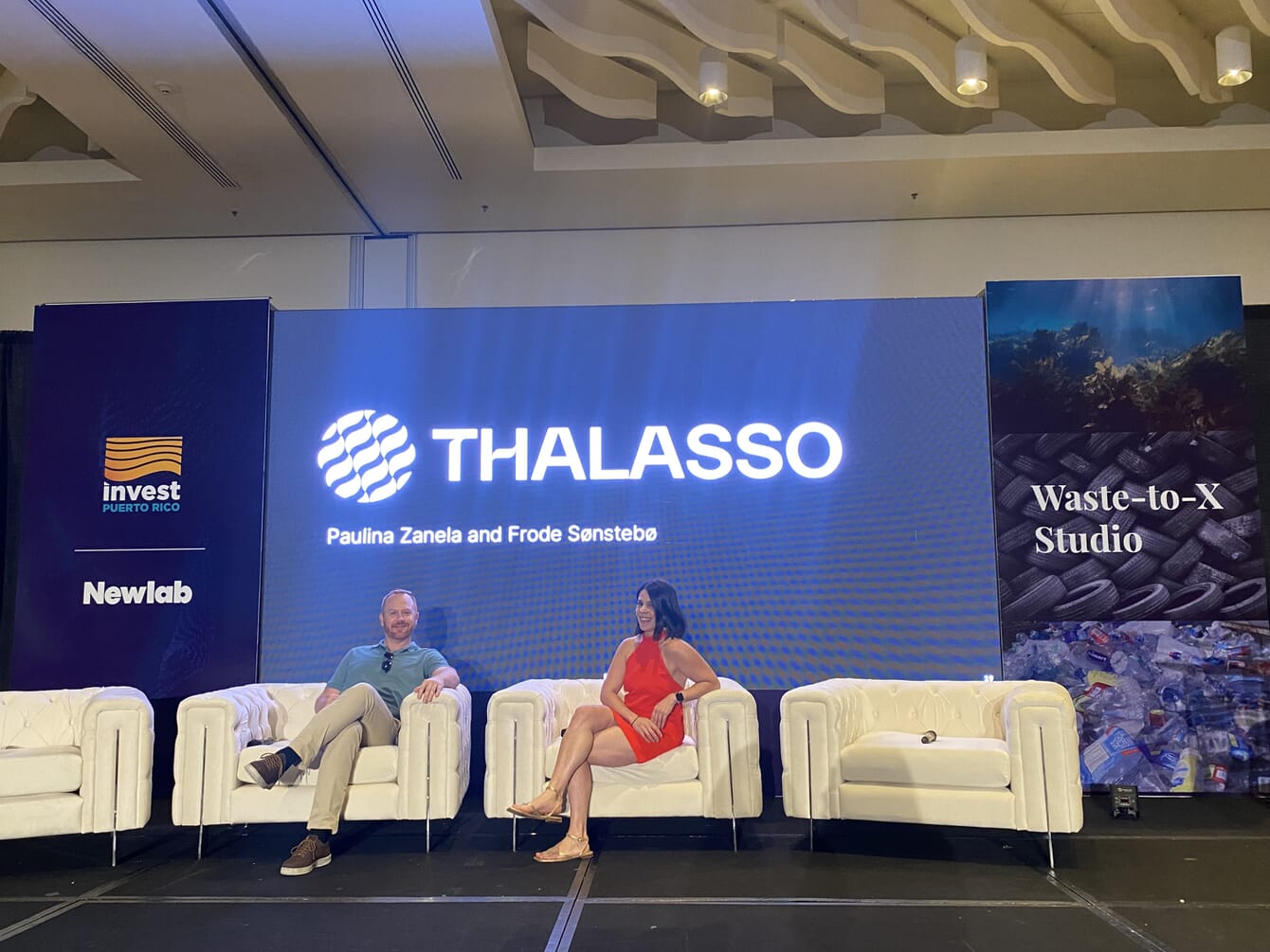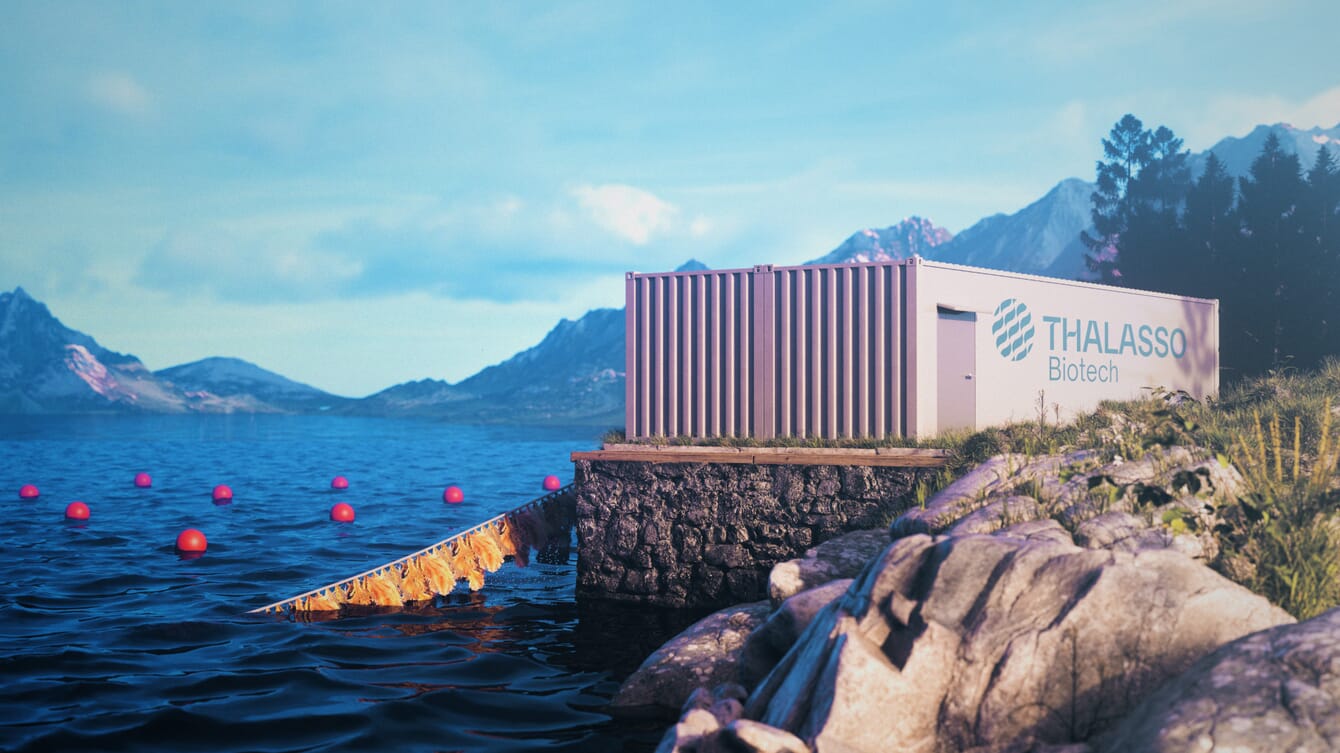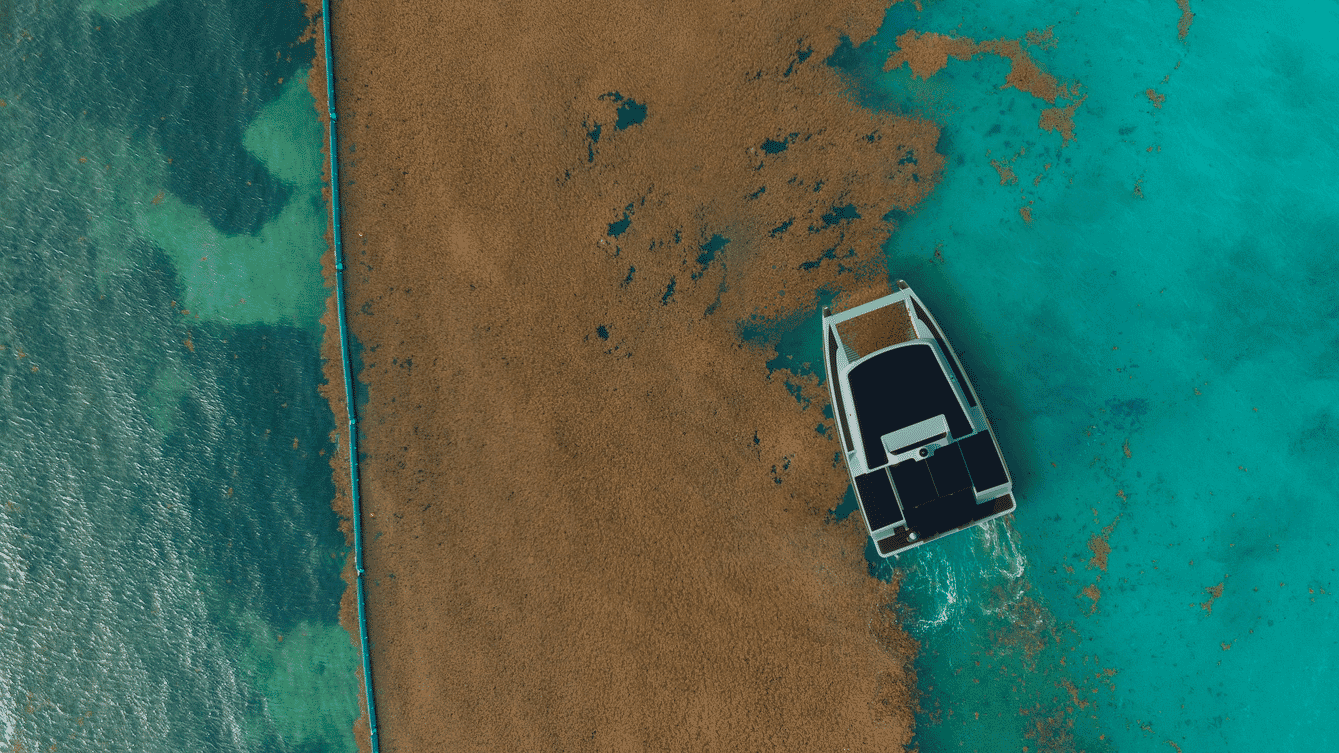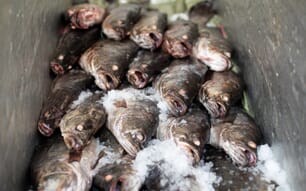
Tourists from across the world have been drawn to the Caribbean’s pristine beaches for generations, but – over the last decade – many have discovered that there’s no sand in sight, thanks to the influx of millions of tonnes of Sargassum seaweed, which smells less-than-fragrant as it rots.
It’s a disaster for the tourism industry and, perhaps more worryingly, the problems are far from being purely aesthetic.
“It’s a state of emergency – the beach as you used to know doesn’t exist any more, the seagrass is dying, the coral reefs are dying, it causes rashes. It was a logical step to try to prevent the Sargassum from reaching the coast,” explains Paulina Zanela, founder of Thalasso, a startup with two branches – one for intercepting the Sargassum and the other for turning it into a range of valuable products.
“In Europe people are investing millions in farming seaweed, but here in the Caribbean we have millions of tonnes of seaweed and people are treating it like garbage – it doesn’t make sense,” she reflects.
Zanela initially focused on preventing the Sargassum from reaching the beaches, designing a unique autonomous vessel that can harvest the seaweed before it reaches the coral reefs. However, she has since pivoted towards the biorefinery process.
“If we just collect the seaweed and deliver it to the coast we’re not really solving the problem – we’re just moving it from the ocean to the land, and most of the Caribbean islands are having problems with waste management because of the lack of space,” she reflects.
“Sargassum is the ugly sister of kelp – it comes from the same family and has the same bioactive ingredients – so we created Thallasso Biotech to extract high value ingredients from Sargassum and turn a problem into an opportunity, We now see it as the ‘gold of the Caribbean’ because of its potential,” she adds.
A decade-long issue
According to Zanela, Sargassum has been affecting Mexico since 2011 – initially in alternating years, but now every year, with longer and longer seasons – landing in swathes on around 400 km of the country’s Caribbean coast.
Growing concern about the impacts brought the issue to the attention of Zanela, who – following six years as a civil servant – was working for a non-profit that aims to improve water supply to some of Mexico’s poorest communities as a means to reduce child mortality levels.
“I developed a reputation for being very stubborn when it comes to solving environmental and social impact issues. So when Sargassum started to hit the Mexican coast some of my former government colleagues reached out to see if I had any solutions – they were very concerned about the potential contamination of underground water,” she recalls.
Around this time one of her projects was shortlisted for a World Bank/ IE business School Madrid competition called H2O Challenge, aimed at finding solutions for water issues, with participants from all over the globe. During the selection process, she met members of a Norwegian initiative, EnviroNor, who gave her a new perspective on the blue economy.
“I got to understand the level of knowledge the Norwegians have when it comes to ocean technology, sustainable use of marine resources and also making money from the ocean, so I reached out to ask if they had any potential solutions for Sargassum,” Zanela explains.
As they didn’t at the time, Zanela decided to join forces with one of their number, Frode Sønstebø, to develop possible solutions to the problem – and Thalasso was born.

© Thalasso
Container-based biorefineries
Once they decided to concentrate on the biorefinery side of the equation they began extracting fucoidans and alginates from the Sargassum, for applications such as the production of biopolymers for textiles and sustainable packaging in the fashion industry, as well as producing biostimulants.
However, she believes that there’s also scope to refine the abundant macroalgae for medical applications – including as an anti-inflammatory and, potentially, even as a means of preventing cancer.
“We truly believe that Sargassum can create a new economy for the Caribbean, based on the use of marine resources, rather than tourism, which is harming the ocean,” she emphasises.
In order to help the process Thalasso has developed a container-based biorefinery design that is uniquely suited for the region – being both small and mobile.
“It makes sense to process the seaweed as close to the coast as possible, as it’s very expensive to transport it. Our refineries can be moved and can process both fresh and dried seaweed, so can operate year-round. They’re easy to operate, they’re very cheap and the yields are very high. It’s a sweet spot between a lab and an industrial refinery,” Zanela reflects.
It’s a model that’s in demand, according to Zanela, who’s been fielding enquiries from seaweed farmers from around the world.
“It seems there’s a big need for these technological tools, as seaweed farmers are currently selling their seaweed to the big players for very low margins, so they can't grow their production. We believe that decentralising seaweed processing can help farmers and harvesters get better prices, improve traceability and lower their carbon emissions,” she explains.

The technology inside the containers has been developed by the startup over the last two years, with some optimisation support from the University of Rio de Janeiro.
“We managed to reduce the volume of chemicals [required to process the seaweed] by 80 percent, which reduces processing costs by 80 percent; and we’ve created a business case for this size of refinery. We’re still going through further optimisations – such as exploring whether we can extract the bioactive molecules using physical, not chemical methods,” says Zanela.
“We have also extracted protein, cellulose and fucoxanthin. The idea is to achieve sequential extraction in the mid-term. We are also looking to test our system on red and green seaweeds, using the same equipment, but with some small tweaks when it comes to grinding and temperatures. We’re still a long way from what we want to do but – in terms of Sargassum – we’re quite advanced and very ready and we’re currently building a pilot facility,” she adds.
A problem of perception
Despite the progress, Zanela admits that it’s not been an easy journey so far – in part because Sargassum has such a bad reputation in countries where the blooms are appearing.
According to Zanela, although Mexico is a large consumer of agar, alginates and carrageenan – due to the size of the livestock, dairy and textile sectors – 99 percent of these ingredients are imported.
However, now that Thalasso has begun to work with other companies as part of a pilot project with New Labs and Invest Puerto Rico, as well as with other companies in the Sargassum value chain, such as Sway, Pangaya and SOS Carbon, she notes that they are gaining greater traction.
“Now we can show people physical objects, like bioplastics made from Sargassum, they understand it much better than if I was to turn up to a meeting with a selection of powders made from seaweed,” she reflects.
Investments and ambitions
Thalasso currently has around 20 small-to-medium investors, who share the startup’s vision.
“People are interested in the impact and in the fact that we’re a community-inspired solution with a big market potential. I think that is what people are delighted about,” says Zanela.
However, she explains that building the pilot plant has used up the lion’s share of their funding, so they are now looking for another raise.
“We closed a $500k pre-seed round which allowed us to achieve ERL 4 for the boat and ERL 5 for the refinery and now we’re raising a seed round of $2 million, with a bridge round of $300k – to help us build the two refineries [in Mexico and Puerto Rico], operate them for a little while and certify the products for different markets,” she says.
She is confident that this will be achieved, especially following her participation in Hatch Blue’s Women in Ocean Food Studio, which took place earlier in the year.
“It’s an amazing support system, full of knowledge, cooperation opportunities and was very inspirational,” Zanela enthuses.

© Thalasso
Key milestones
Thalasso’s biggest milestone to date, according to Zanela, is the development of its pilot biorefineries, the first of which should be operational by June or July of this year.
The founder also reveals that she’s been having some encouraging dialogues with the Mexican government, which has promised to support the startup once the facilities are up-and-running.
Each unit will have the capacity to process 20 tonnes of Sargassum per shift, but Zanela explains that she’s going to start cautiously, with an initial target of 2 tonnes per shift, until the process has been proven and fine-tuned.
The optimisation process has started already.
“In the original design, 20 tonnes of Sargassum was producing 800 l of biostimulant. In the new design with 1.2 tonnes of Sargassum we’re producing 24,000 litres of biostimulant. It’s mindblowing,” Zanela exclaims,
And the market for the biostimulant is strong – and gaining broad governmental support, she adds.
“Mexico’s a big market, and it could also enter Central and South America. Puerto Rico is a US territory, so we can take products to the US from there, and there are a lot of potential clients interested, even in Asia,” Zanela reflects.
She is also content with the development of the technical side of the operation and the growth of the team, which includes five engineers who are working on the pilot plants, four scientific researchers and a pair of financial advisors, as well as the co-founders themselves.
“We want them all to be full-time employees before long, but – first thing’s first – we need to deploy our technology and show it works,” she reflects.
Scaling up
Zanela says that the company is currently having some very positive conversations with “an amazing – but currently confidential – partner in Mexico”, with the intention of significantly upscaling.
“By the end of the year we’ll have a better understanding of the production process and the volumetric needs in some specific areas in Mexico. We’ll then be able to decide whether we’re going to grow organically or through big investment – through the operation of our pilot we will decide whether we grow to 15 or 50 refineries,” she explains.
Zanela aims to initially concentrate on Puerto Rico and Mexico, before looking further afield- with conversations already underway in countries such as Barbados, the Dominican Republic Antigua and Barbuda and even Norway.
“In the future we will hopefully also be providing the technology for Norwegian farmers, who are hopefully going to test it soon,” she reflects.

© Thalasso
A return to harvesting
In Puerto Rico, the seaweed they use is currently gathered by SOS Carbon, using nets towed behind boats, in Mexico it’s supplied by Alejandro Luna, who has a fleet of 11 harvesting vessels.
However, Zanela is looking forward to reviving the company’s activities in the seaweed harvesting space.
“As soon as we start deploying more refineries the collection capacity will need to be increased, and current technologies are not that efficient. It makes sense that the refinery will be paying for the development of the boat. It’s a very cool boat that's not competing with any other technology, because it can operate in areas too risky for boats with people in them,” she explains.
In the meantime, she hopes that the pilot plants prove successful and they can secure sufficient funding to move their business to another level. Given the scale of the problem, and their promising business case, they should have no shortage of interest.








